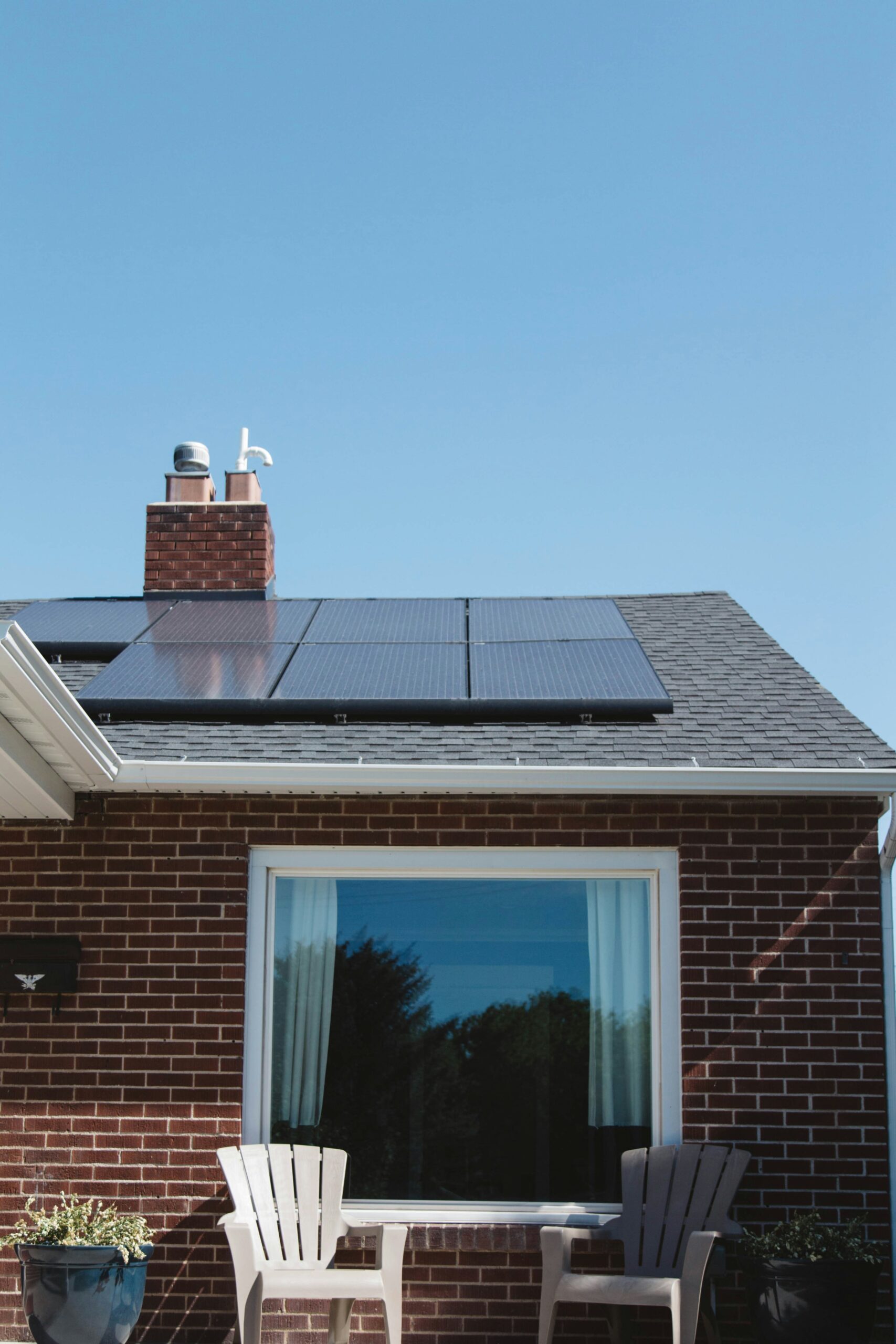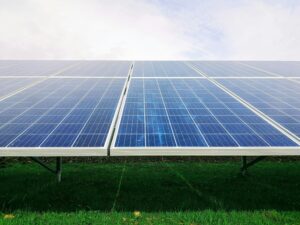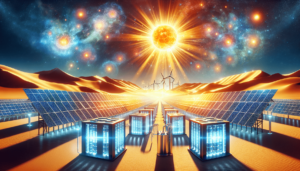Interested in the fascinating world of solar energy? Curious about how those sleek and shiny panels on rooftops and in fields harness the power of the sun? Look no further! In this article, we will uncover the secrets behind the magic, exploring the captivating journey that sunlight takes as it gets transformed into clean, renewable electricity. So, sit back, relax, and prepare to be amazed by the wonders of solar panel technology!

Overview
Introduction to solar panels
Solar panels, also known as photovoltaic (PV) panels, are devices that convert sunlight into electricity. They are an essential component of solar power systems and play a crucial role in harnessing renewable energy. The process of converting sunlight into electricity involves several components working together to capture, collect, and convert solar energy efficiently.
Basic principle of solar energy conversion
The basic principle behind the functioning of solar panels is the conversion of sunlight into electricity through the photovoltaic effect. This effect occurs when certain materials, called semiconductors, absorb photons (particles of sunlight) and release electrons. These released electrons create an electric current that can be harnessed to power various electrical devices and systems.
Components of a solar panel
Photovoltaic cells
Photovoltaic cells are the heart of solar panels. They are semiconductor devices that directly convert sunlight into electrical energy. Made of materials like silicon, these cells have a unique property that allows them to generate an electric current when exposed to sunlight. Photovoltaic cells are connected in a series and parallel arrangement to create larger solar modules.
Solar energy collector
The solar energy collector is responsible for capturing as much sunlight as possible. It typically consists of a glass cover, which serves as a protective barrier, and an anti-reflective coating that increases light absorption. The collector’s primary function is to optimize the transmission and concentration of sunlight onto the photovoltaic cells.
Wiring and connections
Wiring and connections are crucial for the efficient and safe operation of solar panels. They interconnect the photovoltaic cells and enable the flow of electricity. The wiring includes positive and negative leads, which collect the electric current generated by the cells and transfer it to the inverter. Proper wire sizing and insulation are essential to minimize power losses and ensure the safety of the electrical system.
Mounting and support structure
Solar panels need a sturdy and reliable mounting and support structure to ensure they remain securely in place. The mounting system can be fixed, adjustable, or tracking, depending on the specific requirements and location. Proper orientation and tilt angle play a significant role in maximizing solar energy capture, ensuring optimal performance.
Inverter and power conversion system
The inverter is responsible for converting the direct current (DC) electricity generated by the solar panels into usable alternating current (AC) electricity. AC electricity is the standard form of electricity used in homes and businesses. The inverter also synchronizes the generated electricity with the grid and performs monitoring and control functions to optimize system performance.
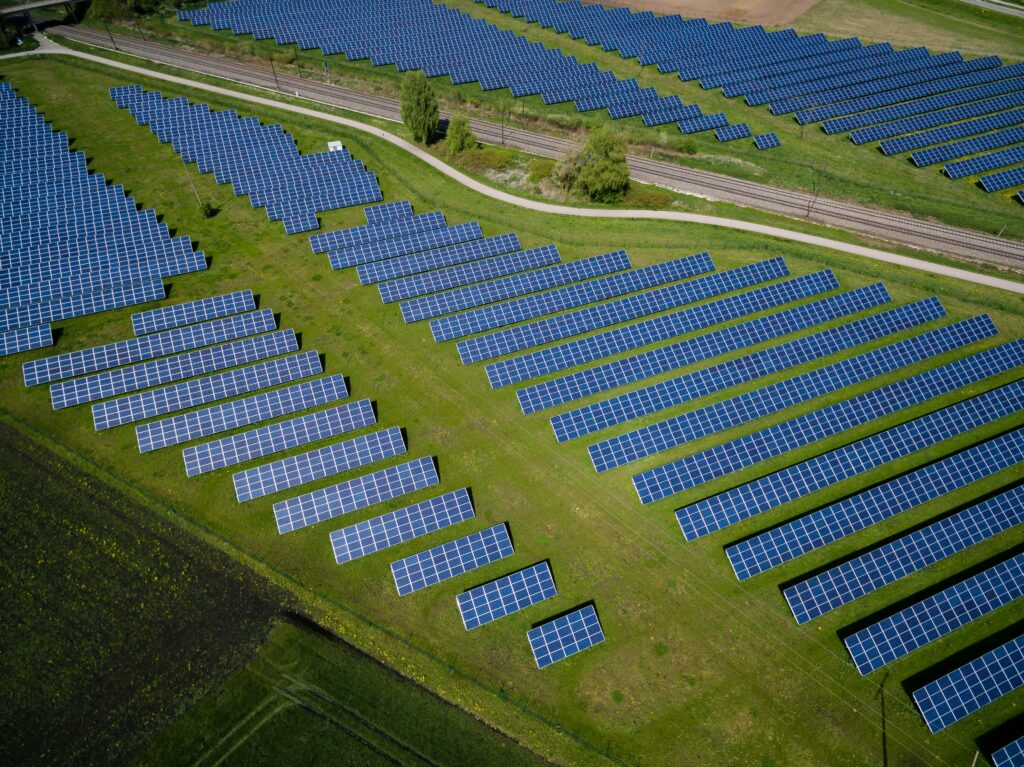
Working of photovoltaic cells
Semiconductor materials
Photovoltaic cells are typically made of semiconductor materials, such as silicon. These materials have unique electrical properties that allow them to generate electricity when exposed to sunlight. Silicon is widely used due to its abundance, low cost, and high efficiency in converting sunlight into electricity.
Generation of electric field
When photons from sunlight strike the photovoltaic cell, they transfer their energy to electrons in the cell’s semiconducting material. This energy absorption creates an electric field across the cell, part of which is inherent to the cell’s structure, while the rest is induced by applying a voltage.
Absorption of solar energy
Semiconductor materials have the ability to absorb photons from sunlight. Sunlight consists of energy-carrying particles called photons, which have different energy levels. The energy levels of the photons must match the bandgap of the semiconductor material for efficient absorption to occur.
Electron excitation and separation
When photons are absorbed by the semiconductor material, electrons in the material’s atoms gain energy and become excited. These excited electrons are then separated from their atoms due to the electric field present in the photovoltaic cell. This separation of charges creates a flow of electrons, or an electric current.
Flow of electrons
The flow of excited electrons creates an electric current within the photovoltaic cell. This current is in the form of direct current (DC) electricity. The photovoltaic cells are interconnected to form solar panels, which collectively generate a significant amount of electrical energy when exposed to sunlight.
Solar energy collection and conversion
Sunlight absorption by solar panels
Solar panels are designed to capture and absorb as much sunlight as possible. The solar energy collector, typically made of high-transmittance glass, allows sunlight to pass through while reducing reflection. An anti-reflective coating further enhances light absorption, ensuring that the most significant amount of light reaches the photovoltaic cells.
Conversion of light energy into DC electricity
As sunlight is absorbed by the photovoltaic cells, the energy carried by photons is converted into electrical energy. This process occurs due to the interaction between the photons and the semiconductor material of the cells. The absorbed photons transfer their energy to electrons within the material, causing them to move and generate an electric current.
Maximum Power Point Tracking (MPPT)
Maximum Power Point Tracking (MPPT) is a technique employed by solar panel systems to optimize energy harvesting. Solar panels have a specific voltage that yields the maximum power output. MPPT technology continuously monitors the electric output of the solar panels and adjusts the voltage to ensure the panels operate at their maximum efficiency.
Transformation of DC to usable AC electricity
The direct current (DC) electricity generated by the solar panels needs to be transformed into alternating current (AC) electricity for practical use. This conversion is accomplished through an inverter, a device that converts the DC electricity to the necessary voltage and frequency required for consumption or grid connection.
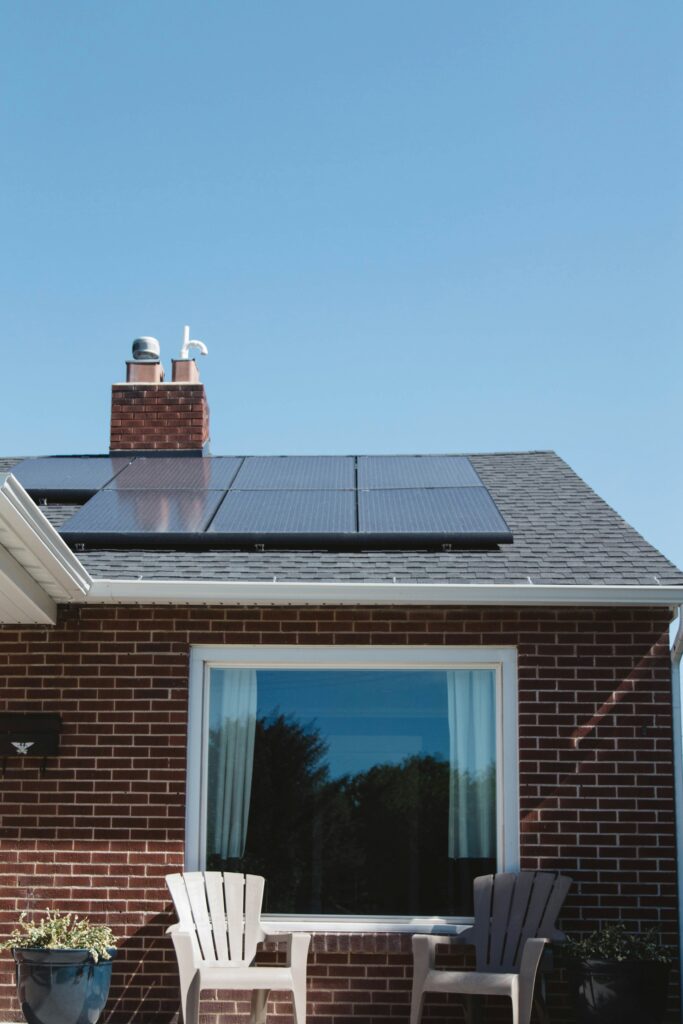
Functions of wiring and connections
Interconnection of solar panels
Wiring plays a critical role in interconnecting the photovoltaic cells within the solar panels. By connecting the positive and negative leads of the cells, the electric current generated by each cell can combine and flow towards the inverter. Proper wiring ensures the flow of electricity is efficient and minimizes power losses.
Safety measures against electrical hazards
Wiring and connections must adhere to strict safety standards to prevent electrical hazards. Proper insulation, grounding, and protection against overcurrents and short circuits are essential to ensure the safety of both the solar panel system and the individuals interacting with it.
Transmission of electricity to inverter
The wiring and connections facilitate the transmission of electricity generated by the solar panels to the inverter. The inverter requires a stable and reliable supply of electricity to perform its functions effectively. Properly sized and installed wiring ensures a smooth flow of electricity from the panels to the inverter.
Mounting and support structure
Types of solar panel mounting
Solar panels can be mounted in various ways to accommodate different installation types. The most common mounting options include roof-mounted, ground-mounted, and pole-mounted systems. Roof-mounted systems are popular for residential installations, while ground-mounted and pole-mounted systems are common for commercial and utility-scale projects.
Orientation and tilt angle for optimal performance
The orientation and tilt angle of solar panels are crucial for maximizing their performance. In most regions, solar panels are ideally oriented to face south in the northern hemisphere and north in the southern hemisphere. The tilt angle is determined based on the latitude of the installation site to optimize solar energy capture throughout the year.
Ensuring stability and durability
A sturdy and durable support structure is essential to ensure the longevity and stability of solar panels. The mounting system should be designed to withstand various weather conditions, including wind, snow, and extreme temperatures. Proper installation and regular inspections are vital to maintain the stability and structural integrity of the mounting system.

Inverter and power conversion system
Conversion of DC to AC electricity
The inverter is responsible for transforming the direct current (DC) electricity generated by the solar panels into usable alternating current (AC) electricity. It converts the DC electricity to the desired voltage and frequency required for powering electrical appliances or feeding electricity into the grid.
Synchronization with the grid
When connected to the electrical grid, the inverter synchronizes the generated AC electricity with the existing grid’s voltage and frequency. This synchronization ensures seamless integration of solar power with the grid, allowing excess electricity to be fed back into the grid or drawing electricity from the grid when solar generation is insufficient.
Monitoring and control functions
In addition to power conversion, modern inverters also perform monitoring and control functions. They provide real-time data on the performance of the solar panel system, including energy production, voltage, and current. This information helps users optimize their energy consumption and identify any issues or inefficiencies in the system.
Grid-tied vs. off-grid solar systems
Grid-tied solar systems
Grid-tied solar systems are directly connected to the electrical grid. They generate electricity from solar panels and feed the excess energy back into the grid. Grid-tied systems allow users to offset their electricity consumption and potentially earn credits for the excess energy they contribute to the grid.
Off-grid solar systems
Off-grid solar systems, as the name suggests, are not connected to the electrical grid. They are independent power systems that generate and store electricity using solar panels and batteries. Off-grid systems are commonly used in remote areas or locations where connecting to the grid is not feasible.
Advantages and disadvantages of each
Grid-tied solar systems offer the advantage of utilizing existing grid infrastructure, providing a constant electricity supply even when solar generation is insufficient. They also enable users to benefit from net metering and potentially reduce or eliminate their electricity bills. However, they are dependent on the grid and do not provide backup power during grid outages.
Off-grid solar systems provide complete energy independence and resilience. They are ideal for locations with unreliable or non-existent grid infrastructure. However, they require larger battery capacity and careful energy management to ensure a constant electricity supply, especially during periods of low solar energy generation.
Efficiency and limitations of solar panels
Factors influencing efficiency
Several factors influence the efficiency of solar panels. These include the quality of the photovoltaic cells, the transparency and cleanliness of the protective cover, the amount of sunlight received, and the temperature at which the panels operate. Higher quality materials, optimal sunlight exposure, and proper maintenance contribute to higher overall efficiency.
Temperature effects
The operating temperature of solar panels affects their efficiency. As the temperature increases, the efficiency of the cells decreases. This is due to the nature of semiconductors, which experience increased resistance to electron movement at higher temperatures. Proper installation and ventilation can help mitigate the impact of temperature on solar panel efficiency.
Shading and obstructions
Shading and obstructions, such as nearby buildings, trees, or dust, can significantly reduce the efficiency of solar panels. When a portion of a solar panel is shaded, the affected cells produce less electricity, leading to an overall decrease in energy output. Careful consideration of the installation location and regular cleaning can help minimize shading and obstructions.
Maintenance and cleaning
Regular maintenance and cleaning are essential to ensure optimal performance and longevity of solar panels. Dust, dirt, and debris can accumulate on the surface of the panels, reducing their efficiency. Periodic cleaning and inspection of the panels, along with monitoring their performance, can help identify and address any issues or inefficiencies promptly.
Applications of solar panels
Residential solar power systems
Solar panels are commonly used in residential settings to offset electricity consumption and reduce dependency on the grid. Residential solar power systems can be installed on rooftops or as ground-mounted systems, providing homeowners with a clean and sustainable source of electricity. They offer long-term cost savings and contribute to reducing carbon emissions.
Commercial and industrial installations
Solar panels are increasingly being adopted in commercial and industrial settings to meet the energy demands of businesses and facilities. Large-scale solar installations on rooftops or ground-mounted systems can offset a substantial portion of electricity consumption, resulting in significant cost savings and reducing the carbon footprint of businesses.
Solar-powered appliances and devices
Solar panels are also used to power individual appliances and devices. From solar-powered outdoor lights to portable solar chargers for mobile phones and other electronics, solar energy offers a convenient and sustainable solution for various everyday applications. Solar-powered appliances and devices reduce the reliance on traditional electricity sources and increase energy efficiency.
Solar farms and large-scale power plants
Solar farms and large-scale power plants harness the power of the sun to generate electricity on a massive scale. These installations consist of thousands of solar panels arranged in arrays to collectively generate significant amounts of electricity. Solar farms and large-scale power plants play a crucial role in diversifying the energy mix, reducing reliance on fossil fuels, and combating climate change.
In conclusion, solar panels are key components of solar power systems that convert sunlight into electricity through photovoltaic cells. They capture and convert solar energy into usable electrical energy, providing clean and sustainable power. Understanding their components, working principles, and applications is essential in embracing renewable energy and transitioning towards a greener future.

